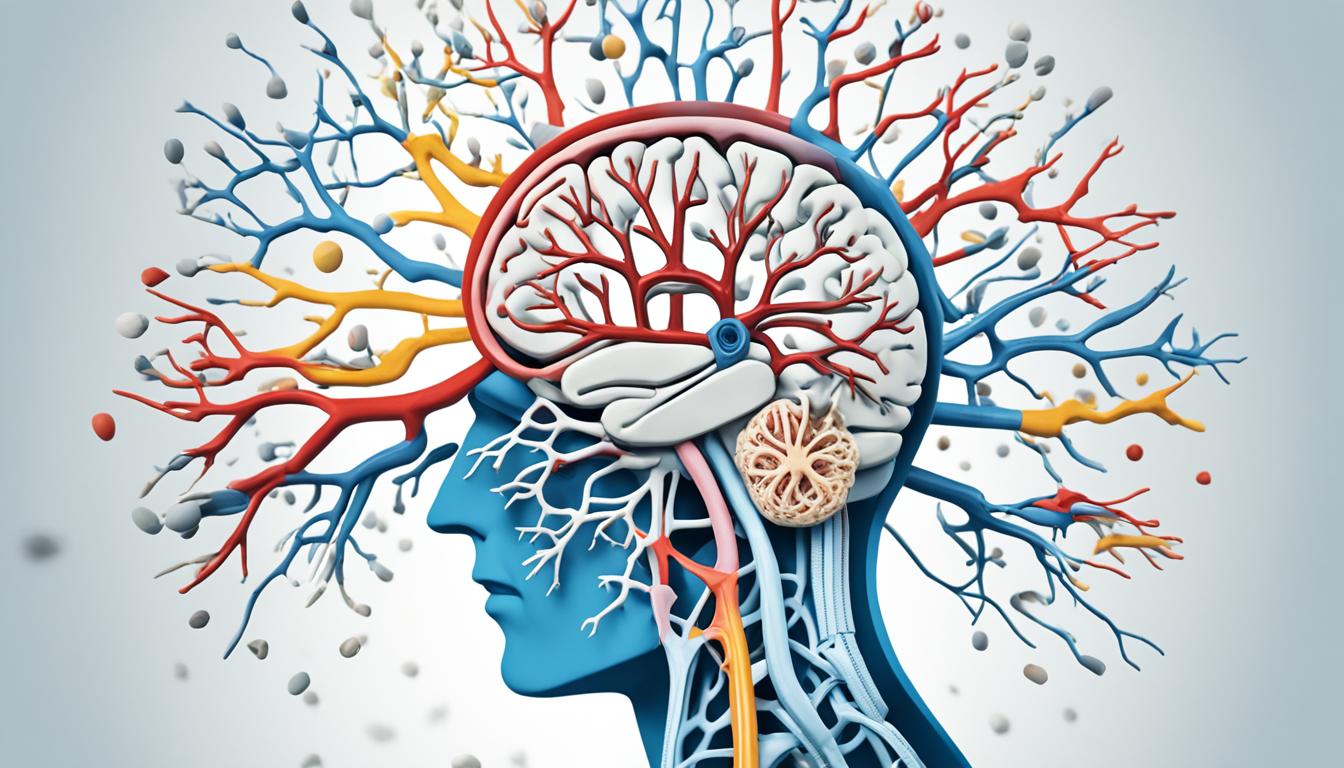Head trauma coma is when the brain can’t function normally due to a sudden hit to the head. It’s often linked with traumatic brain injury (TBI) from falls, car accidents, violent acts, or sports impact. How serious the symptoms are can vary. They might include brief changes in mental status or even a long coma.
Mild TBI symptoms are things like headaches, feeling sick, being tired, dizzy, trouble with senses, or changes in thinking or behavior. For more serious TBIs, people might lose consciousness, have constant headaches, throw up often, have seizures, or their pupils get very big.
The Glasgow Coma Scale helps doctors tell how bad the brain injury is. It helps them see how aware the person is. Managing head trauma coma involves watching the person closely, giving them care they need, and sometimes doing surgeries or providing medicine.
Stem cell therapy, a new way to treat TBI, is beginning to show real results. Stem cells help the brain heal by moving to the injury spot. They release substances that cut down swelling and encourage new growth.
Key Takeaways:
- Head trauma coma is the disruption of normal brain function caused by a sudden impact to the head.
- TBI is often the main reason people get head trauma coma and can happen from several types of accidents.
- The symptoms can be from mild to severe, including changes in thinking or staying unconscious for long periods.
- If the TBI is mild, it might cause headaches, nausea, tiredness, and changes in how a person thinks or acts.
- Stem cell therapy is a new treatment option for TBI, and it’s showing hope for helping the brain heal.
Causes and Symptoms of Traumatic Brain Injury
Traumatic brain injury (TBI) happens from various events like falls, car crashes, assaults, and sports mishaps. Falls are the top reason for TBI, hitting both older folks and kids hard. This injury also comes from domestic violence, bullet wounds, car crashes, and harm on the sports field or in war.
Symptoms change depending on how much the brain is hurt. With mild TBI, you might feel a headache, sick, tired, struggle to talk, and find your senses or thinking off. If TBI is worse, you might pass out, have constant headaches, throw up a lot, have seizures, or notice your eyes change.
Kids with TBI show different signs, like not eating well, being grouchy, finding it hard to focus, having seizures, or not enjoying their usual activities. Always get medical help fast if there’s a chance of TBI after a head blow. Spotting the symptoms early is key for the best chance of recovery.
Causes of Traumatic Brain Injury
| Causes | Description |
|---|---|
| Falls | Most common TBI cause, impacts all age groups. Can stem from accidents, balance issues, or unsafe surroundings. |
| Motor vehicle accidents | Crashes with cars, bikes, or people on foot often lead to TBI because of the hit force. |
| Violence | Intentional harms, like fights, domestic abuse, or bullets, can severely hurt the brain. |
| Sports injuries | High-impact or contact sports such as football or boxing sometimes lead to TBI. |
| Military engagements | Combat areas expose soldiers to TBI risks from blasts, bullets, and traumatic situations. |
Symptoms of Traumatic Brain Injury
- Mild TBI symptoms:
- Headache
- Nausea
- Fatigue
- Speech problems
- Sensory issues
- Cognitive or behavioral changes
- Moderate to severe TBI symptoms:
- Loss of consciousness
- Persistent headache
- Repeated vomiting
- Seizures
- Changes in pupil size
- Infants and children with TBI:
- Changes in eating habits
- Irritability
- Difficulty paying attention
- Seizures
- Loss of interest in activities
Knowing TBI’s causes and symptoms is vital for fast medical help. If anyone gets a head injury or shows TBI signs, see a doctor right away for checks and care.
Advances in Traumatic Brain Injury Treatment
Traumatic brain injury (TBI) treatment has seen big changes lately, especially for those in a coma. The way doctors treat TBI depends on how severe it is and what symptoms the person shows.
Patients might get rest, maybe some medicine, or even have surgery. Rehab and newer therapies like stem cell treatments are becoming more common too.
Stem cell therapy looks very promising for helping with TBI. It’s all about using the body’s own cells to help fix injuries inside the brain.
Stem cells can move right to where the brain is hurt and start to heal it. They do this by reducing swelling and helping new cells grow. Other treatments like breathing pure oxygen, stimulating the brain, or working on behavior are also on the rise.
Scientists are still studying how stem cell therapy and these new ways of helping can better the lives of TBI patients. There’s a lot of hope for the future in how we can heal brains after injuries.

